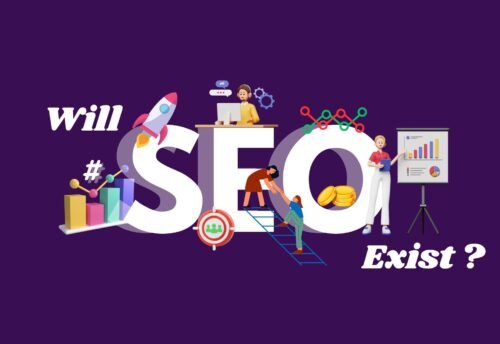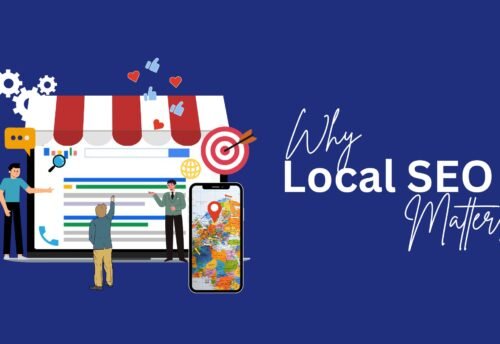
10 Mistakes to Avoid When Building E-Commerce Website
The world of e-commerce is booming, offering a fantastic opportunity for businesses to reach new customers and expand their reach. But building a successful online store takes more than just throwing products on a website and hitting “publish.” Common pitfalls can turn potential customers away and leave your online empire floundering.
If you’re venturing into the exciting world of e-commerce, here are 10 crucial mistakes to avoid when creating your website:
1. Neglecting User Experience (UX):
Your website is your online storefront. Just like a physical store, it needs to be inviting, easy to navigate, and provide a seamless shopping experience. A cluttered layout, confusing menus, and slow loading times will frustrate potential customers and send them running to your competitors.
Focus on:
- Clear and concise navigation: Make sure users can easily find the products they’re looking for with intuitive menus and categories.
- Fast loading times: Nobody likes waiting for a website to load. Optimize your images and code to ensure a smooth browsing experience.
- Mobile responsiveness: A significant portion of online shopping happens on mobile devices. Ensure your website displays flawlessly on all screen sizes.
2. Cutting Corners on Design:
While a fancy website isn’t essential for success, a poorly designed one can definitely hurt your brand image. Invest in a clean, professional design that reflects your brand identity and makes your products look their best.
Avoid:
- Stock photos and generic layouts: These scream low effort and won’t make your brand stand out.
- Clashing colors and fonts: Aim for a cohesive and visually appealing design that’s easy on the eyes.
- Overloading the page with elements: Keep it simple and avoid overwhelming users with too much information.
3. Low-Quality Product Images and Descriptions:
High-quality product images are essential for e-commerce. They allow customers to see your products in detail and make informed decisions. Skimpy descriptions lacking key information will leave them confused and hesitant to buy.
Invest in:
- Professional product photography: Showcase your products from multiple angles and in high resolution.
- Detailed and informative descriptions: Include key features, benefits, and specifications.
- User-generated content: Consider incorporating customer reviews and photos to build trust and social proof.
4. Forgetting About Mobile Optimization:
As mentioned before, mobile shopping is a major force in e-commerce. If your website isn’t optimized for mobile devices, you’re missing out on a huge chunk of potential customers.
Ensure:
- Responsive design: Your website should automatically adjust to different screen sizes for a seamless mobile experience.
- Easy-to-use mobile checkout: Make the checkout process simple and streamlined for mobile users.
- Fast mobile loading times: Optimize your website for mobile browsing to avoid frustrating customers with slow loading.
5. Ignoring Security:
Security is paramount in e-commerce. Customers need to feel confident that their personal and financial information is safe when they shop on your website.
Prioritize:
- Secure Sockets Layer (SSL) certificate: This encrypts data transmission between your website and customer’s browsers.
- Payment gateway security: Choose a reputable payment processor with robust security measures.
- Regular security updates: Keep your website’s software and plugins up-to-date to address any security vulnerabilities.
6. Hiding Important Information:
Customers need easy access to crucial information like shipping costs, return policies, and contact details. A lack of transparency can breed distrust and deter potential buyers.
Make sure to prominently display:
- Shipping information: Clearly outline shipping costs, estimated delivery times, and return policies.
- Contact details: Provide multiple ways for customers to reach you, including a phone number, email address, and contact form.
Company information: Build trust by showcasing your company’s story, mission, and team.
7. Making Checkout a Hassle:
A lengthy and complicated checkout process is a surefire way to lose customers. Streamline your checkout to make it quick and easy for them to complete their purchases.
Offer:
- Guest checkout: Allow users to purchase products without creating an account.
- Multiple payment options: Cater to different customer preferences by offering a variety of payment methods.
- Clear order confirmation: Provide a clear confirmation page with order details and estimated delivery date.
8. Neglecting Customer Service:
Excellent customer service is essential for building customer loyalty and encouraging repeat business.
Don’t skimp on:
- Responsive customer support: Offer multiple channels for customer support, such as email, live chat, and phone. Respond to inquiries promptly and professionally.
- Returns and exchange policy: Make it easy for customers to return or exchange products with a clear and fair policy.
- Post-purchase communication: Send order confirmation emails, shipping updates, and follow up with customers after their purchase to ensure satisfaction.
9. Forgetting About SEO (Search Engine Optimization):
Organic search traffic is a valuable source of potential customers. If your website isn’t optimized for search engines, it will be difficult for people to find your products.
Here’s how to improve your SEO:
- Keyword research: Identify relevant keywords that potential customers might use to search for your products.
- Content optimization: Optimize your product descriptions, blog posts, and other website content with targeted keywords.
Technical SEO: Ensure your website has a clean and well-structured code to improve search engine crawlability.
10. Failing to Analyze and Adapt:
The world of e-commerce is constantly evolving. What works today might not work tomorrow. That’s why it’s crucial to track your website’s performance and adapt your strategies accordingly.
Here are some ways to stay ahead of the curve:
- Website analytics: Use analytics tools to track website traffic, user behavior, and conversion rates.
- A/B testing: Test different versions of your website elements, such as product pages and checkout flows, to see what works best.
- Stay updated on e-commerce trends: Keep an eye on emerging trends in e-commerce and adapt your website and marketing strategies accordingly.
By avoiding these common pitfalls and focusing on creating a user-friendly, secure, and well-optimized website, you’ll be well on your way to building a successful e-commerce store.
Ready to take your online store to the next level?
Look no further than Technobizzar, the best website designer and developer company in Navi Mumbai. Our team of experienced professionals can help you create a beautiful, functional, and high-converting e-commerce website that will turn visitors into customers. We offer a wide range of services, including:
- Website design and development
- E-commerce platform integration
- Software Development
- Mobile Apps Design
- Digital marketing
- SEO optimization
Contact us today for a free consultation and see how we can help you achieve your e-commerce goals!
Don’t settle for anything less than the best. Choose Technobizzar for your e-commerce website needs!





Leave a Comment